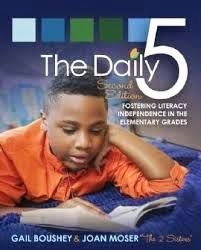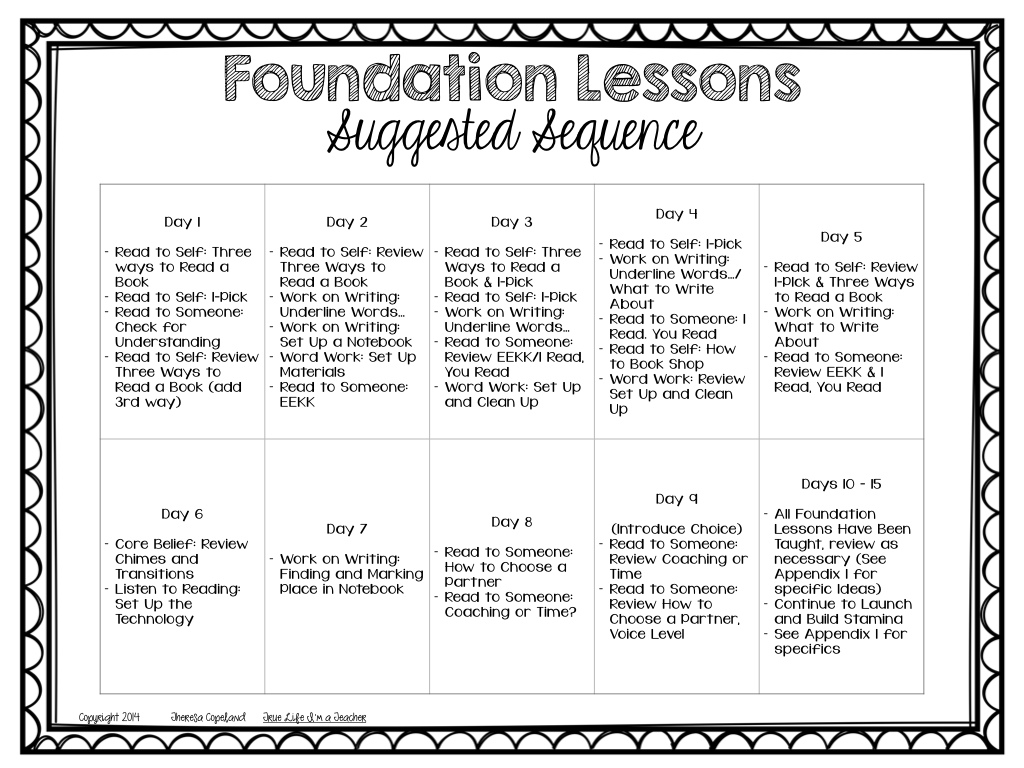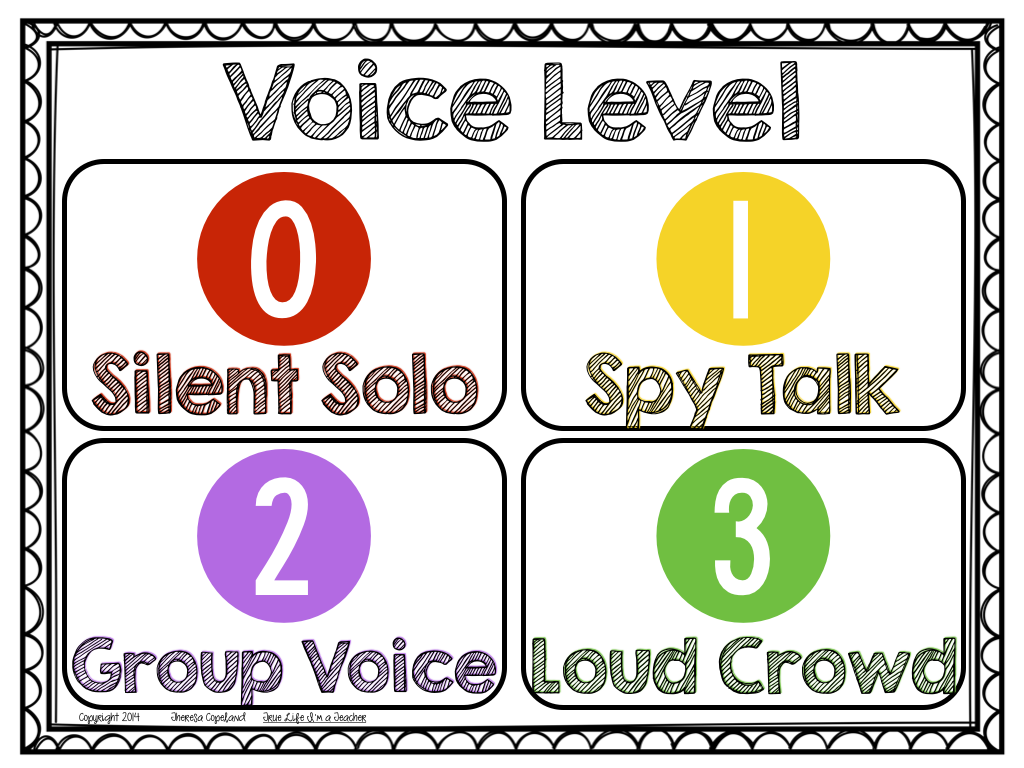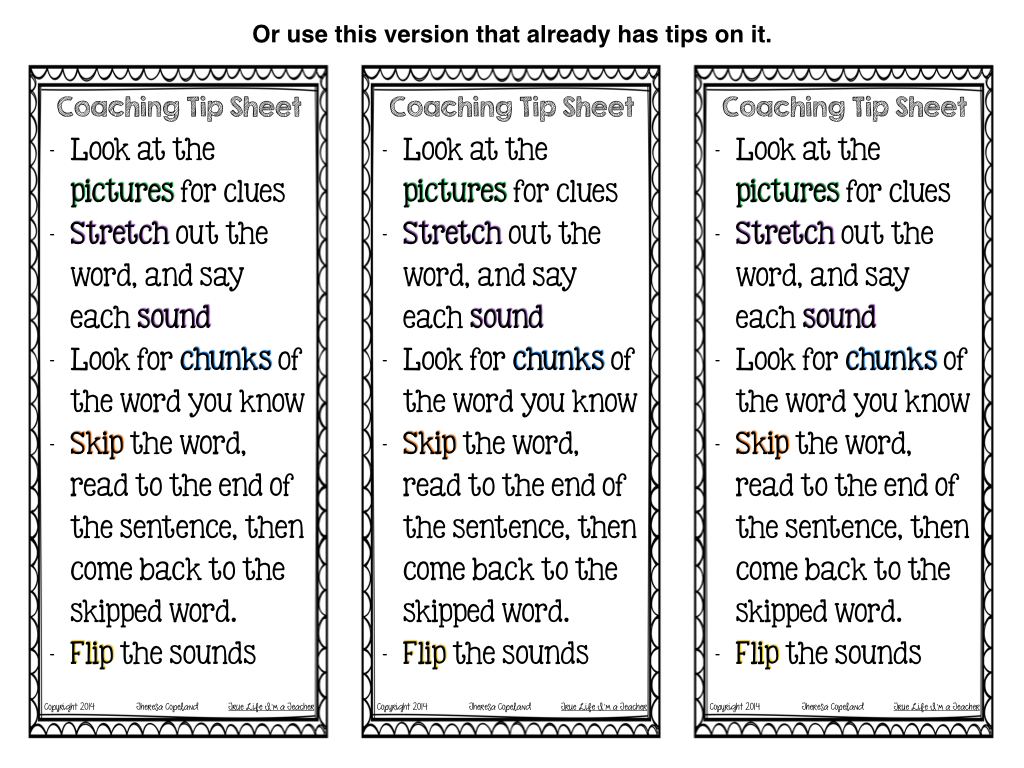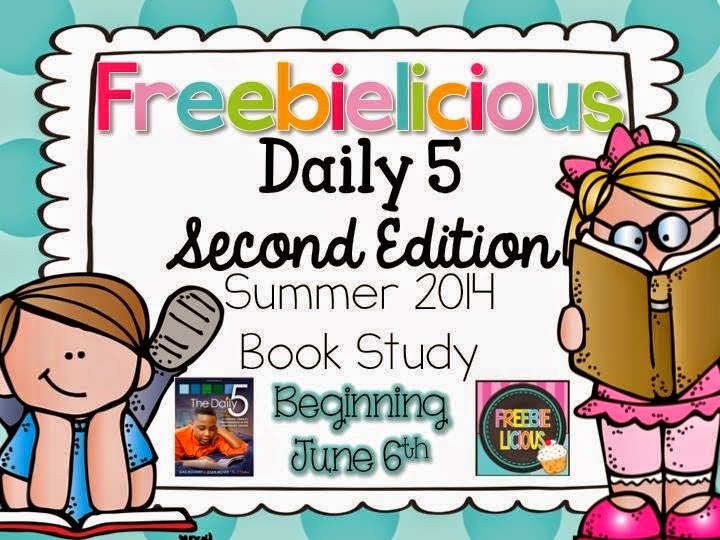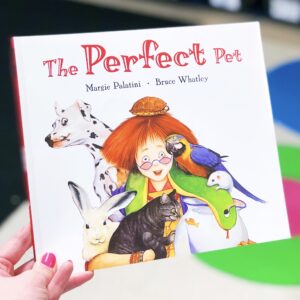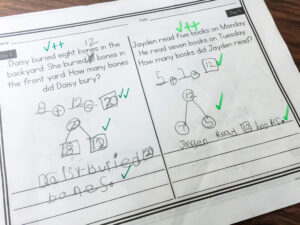Hey Friends! I love chapter 6 of The Daily 5, and I have lots of great resources for you! If you’re just joining, and are interested in Chapters 1-5, you can find them here. Also, if you haven’t picked up your copy of the book, you still have plenty of time! The picture below will take you directly to Amazon.
Chapter 6 is all about the other foundation lessons that you’ll need to teach in order to launch D5 effectively. Perhaps my favorite line in the entire book is this, “In essence, we are building the airplane as we are flying it.” And that’s exactly what it feels like. Before this second edition, I couldn’t ever quite explain how it was that I was teaching at the same time we were practicing and doing it, but the 2 Sisters explained it perfectly.
For Chapter 6, I’m going to share ideas, and resources for each foundation lesson listed, just as it’s listed in the book. Remember that this section is for reference, and not necessarily taught in the sequence listed in this chapter. In fact, I don’t recommend teaching it in this sequence, and The 2 Sisters don’t recommend it either. They say, as always, to let the group of students you have help you decide what to teach when, and what to introduce next.
In Appendix I, there are lesson plans for launching D5. Because I’m such a visual person, I needed sort of cheat sheet, that would list exactly what’s suggested to teach each day of the launch. It’s included in the D5 Freebies resource file in my TpT store. You can grab it here or the picture below.
Read to Self – Three Ways to Read a Book
I shared about this in the last post all about Chapter 5.
Read to Self – I-PICK
The 2 Sisters talk about this in Chapter 5, but I didn’t have my recourses ready to share when I posted…so I’ll share them now. I-PICK is so powerful, because again, there’s the element of choice. Such a simple concept, and yet it’s so motivating.
In my district, students start arriving to the classroom at 7:15, but the instructional day doesn’t begin until 7:50. What was I to do with random students, and never my whole class for 35 minutes? Well, we do morning work, and BOOK SHOPPING!
I set up a book shopping schedule. Students get to book shop once per week (although absences and such happen, so it’s flexible). But the idea behind this was that if all 22 of my students tried book shopping at the same time it would be a hot mess. Heck, sometimes 4 – 5 kids book shopping is a hot mess. Anyway, I just divide my kids up (pretty randomly, although I try to separate any behaviors that might prevent students from staying focused on the task at hand). I post this near the classroom library, and we refer to it throughout the year.
After we do the I-PICK lesson, each student will get a bookmark to help them remember what they should be doing while book shopping.
Read to Self – Choose a Successful Spot
This lesson is sort of embedded throughout the entire launching process. Up until a point, you will be choosing spots for students. Each day students should reflect on how the different locations feel, allow them to work and build their stamina. You’ll find that certain students will gravitate to the same spot each day because they know that’s where they work best. I had a few students who sat at their desks the entire year. They would occasionally venture out to different spot, but usually found it was just too distracting for them, so they would move back to their desks.
We have an anchor chart that hangs in the classroom dedicated to choosing a successful spot. We reflect each day, and will add to the anchor chart. I also like to have my students brainstorm what will helps them choose a successful spot. The kids love it, and it helps in the community building process.
Work on Writing – Underline Words
This is actually a lesson I teach during Writer’s Workshop as well. It warrants being taught a few times. There are the perfectionists (I’m totally one of them) who just can’t seem to get past the idea of it not being perfect. It’s through modeling many, many times that students are convinced this is ok.
We actually circle the word, and put “sp?” above the word so it stands out a bit more. This helps call attention to it, so that when I’m conferencing with a student, or when students are working together, we can all help each other out on spelling.
Throughout Writer’s Workshop, we learn strategies for spelling words we’re not sure of, and add those strategies to our writer’s notebooks. Things like circle and put “sp?”, say the word slowly, stretch out the word, and write the sounds you hear, use a dictionary, and so on.
Work on Writing – Set Up a Notebook
For the past few years, I’ve used composition notebooks for writer’s notebooks. Actually, we use composition notebooks for everything requiring a notebook. I have nothing against spiral notebooks, I’ve just found that the composition notebooks tells to fair a little better.
My students decorate their writers’ notebooks with all sorts of things. Namely anything that could help them get an idea for what to write about. I decorate my notebook as well, and I share my writer’s notebooks from years prior. My students are always in awe of how full those things are, and I explain that by the end of the year, theirs will be full of writing too!
Decorating them is a fun task for the beginning of the year. Depending on your class you can send home a letter asking students to bring in stickers, letters, old magazines, pictures, etc…that can be glued onto the notebooks. Or you can send notebooks home, and students decorate them as part of a homework assignment.
This past year, I was fortunate enough to work in a school where parents bring in piles of school supplies, but this wasn’t always the case for me in past schools. I was buying school supplies for my entire class! There are great back-to-school deals…watch the ads in newspapers weekly ads. Each store has great deals on different items each week. Usually a handful are on sale for some ridiculously low price (even a penny in some cases – although don’t get me started on the new rules for penny deals).
Work on Writing – Choose What to Write About
As a writer, which all are in some capacity, usually the hardest this is actually deciding on what to write about. For kids, I think this is the hardest aspect. Much of the launch in writer’s workshop, is about generating ideas, and just writing. Getting the words on.the.paper.
Perhaps the trickiest part (and this happens to me all.the.time) is that ideas pop into my head at different times. I might be in the car, and I see something that reminds me of something I’d like to blog about. By the time I get home, I can’t remember what it was I thought of.
I teach my students that we jot down those ideas in a special place so we can refer back to them when we can’t think of anything else to write about. There are many graphic organizers to help with this, and below you’ll see mine. I don’t always use a graphic organizer for jotting down ideas. Usually, we just use the first few pages of our writer’s notebook like The 2 Sisters suggest. But for some students, this helps get the ideas going.
Read to Someone – EEKK
Love, love, love the story The 2 Sisters tell to illustrate this point. I tell a similar version, except the person who screams “EEKK” is the one and only True Life I’m Married to a Teacher (any other Mr.’s in need of a support group??).
Side note: At the end of the year, I have my students write a letter to a new second grader telling them all about me, and second grade. One of my sweet seconds, mentioned the story I tell about Mr. getting scared and screaming “EEKK!” Not only did I find it humorous, I was amazed that some 180 days later, this sweet baby remembered that exact story. Moral? These mini-lessons are powerful!!!
Anyway, read to someone is a favorite for many of my students, however, it’s also what causes the most discord among students, and the breaking of stamina. Once choice is established, I help by limiting the number of students who can choose read to someone at a given time. Usually 6-8 students or 3-4 pairs are as many as what our classroom can handle.
We also recite, many, many times this cute poem!
Read to Someone – Voice Level
Voice levels are something we work on the entire year, and not just in D5. Last year we came up with different voice levels, but there were like 6 or 7 of them, and it was just too many. I scaled it back for this year, and there are only 4. Silent Solo, Spy Talk, Group Talk, and Loud Crowd. At the beginning of the year, I’ll have my students brainstorm when they think each level is appropriate. Then, I’ll post the chart with a clothespin. My teacher’s assistant (classroom job) will move the clip to the appropriate level after directions are given.
The 2 Sisters share that the loudest voice in the room regulates the noise level, which is why they always try to speak softly – not only does it encourage students to listen carefully, it also helps maintain the voice level. Don’t believe me? Do an experiment in your class. Give directions softly, and dismiss students softly. Then during a different part of the day, just use your normal speaking voice, and see if there are any changes in the noise level.
Read to Someone – Check for Understanding
I love this strategy! It’s actually a strategy from The Cafe Book. But it goes along beautifully with teaching students to monitor their inner voice or metacognition while they read.
In both the first D5 book, and this one, The 2 Sisters share that they have a tangible Check Mark they use for Check for Understanding. I never have, however, as the days creep by during the school year, my students become more and more lax about this. I’m hoping having a tangible check mark will help keep them on track.
My plan is to print these on colorful card stock, laminate, and have each student keep one in his/her book box. Nothing fancy, just something concrete.
Read to Someone – How Partners Read, Who Goes First, Reading Coach, and Finding a Partner
I like to introduce each of the ways listed in the book one at a time, and have all students practice the same way until all of the options are taught. I’ve found that if I teach them all at once, it gets messy. Like my kiddos can’t keep it straight, and it gets confusing for them.
Once their all introduced, I’ll have my students glue this reminder into their reading notebooks as a reference. Most of, if not all, of the resources shared are made with my kiddos as anchor charts, but hopefully these will serve as good references for you.
Listen to Reading
A fan favorite! My kiddos love this, however, there are a limited number of devices available. I have to limit the number of students who can do this each round. Any easy way to manage this is to have a list of each student in your class posted near where you keep your listening devices. Laminate it, and students can check off their name after their turn.
The biggest part of listen to reading (and word work) are setting up and cleaning up the materials involved. I suggest taking pictures of the the materials should look, and including those on your anchor chart. This way, students have a visual reference in which to compare.
Word Work
As I mentioned before, the biggest component to this is setting up and cleaning up. Taking pictures of how the space should look is a great way to help reinforce the independent behaviors.
Another component to this is choosing what words students will use. We use Words Their Way, and so I have the sorts copied and stored in the word work area to that students can grab a sort, and be on their way.
Another option is that students can use words from the word wall, or their personal word collector. I like to have them using the words their way sorts because it reinforces that specific pattern. On shorter weeks, I’ll have them use the word wall words.
Wowza. That’s a lot of information! Hopefully you found some helpful tips, ideas, or resources that you’ll be able to use in your classroom this year!
Chapter 7 is When to Launch the Next Daily 5. Can’t wait to share! In the meantime, check out these other magnificent bloggers and their ideas!

